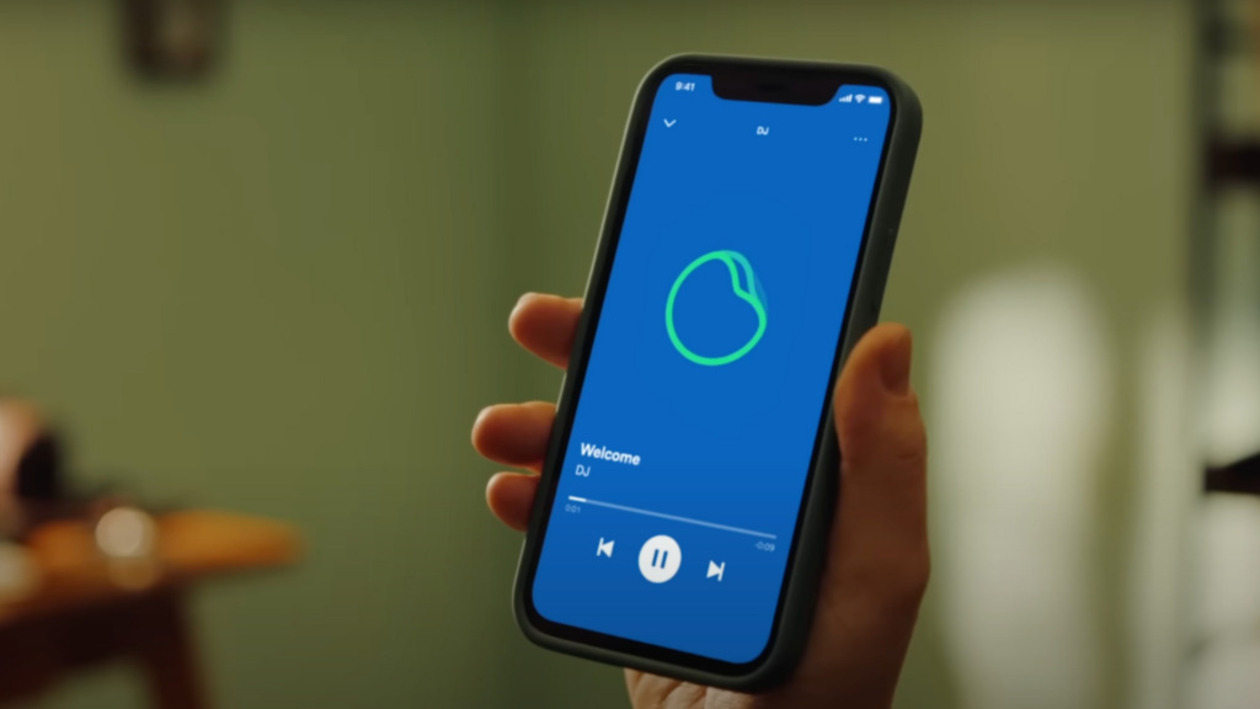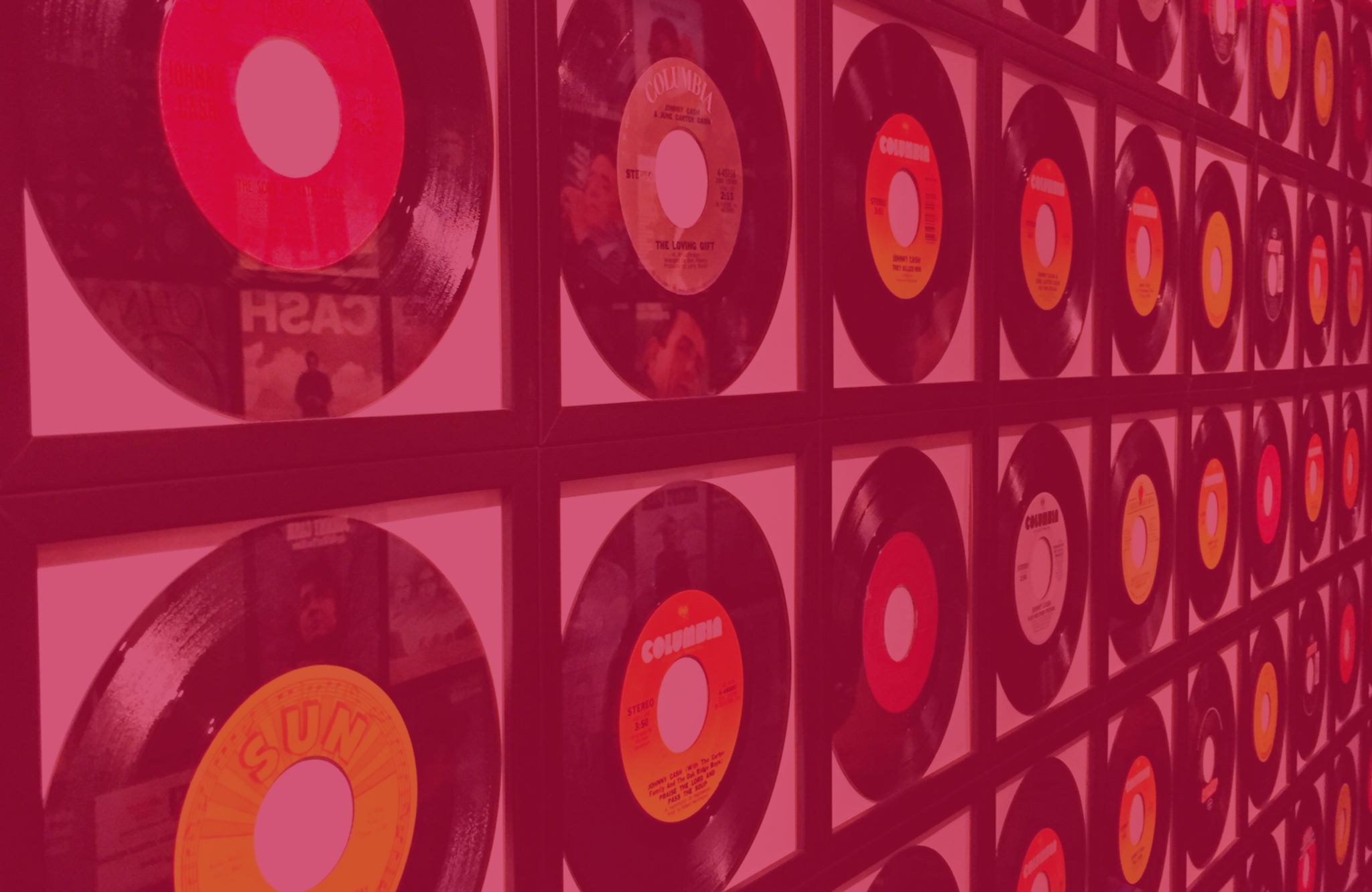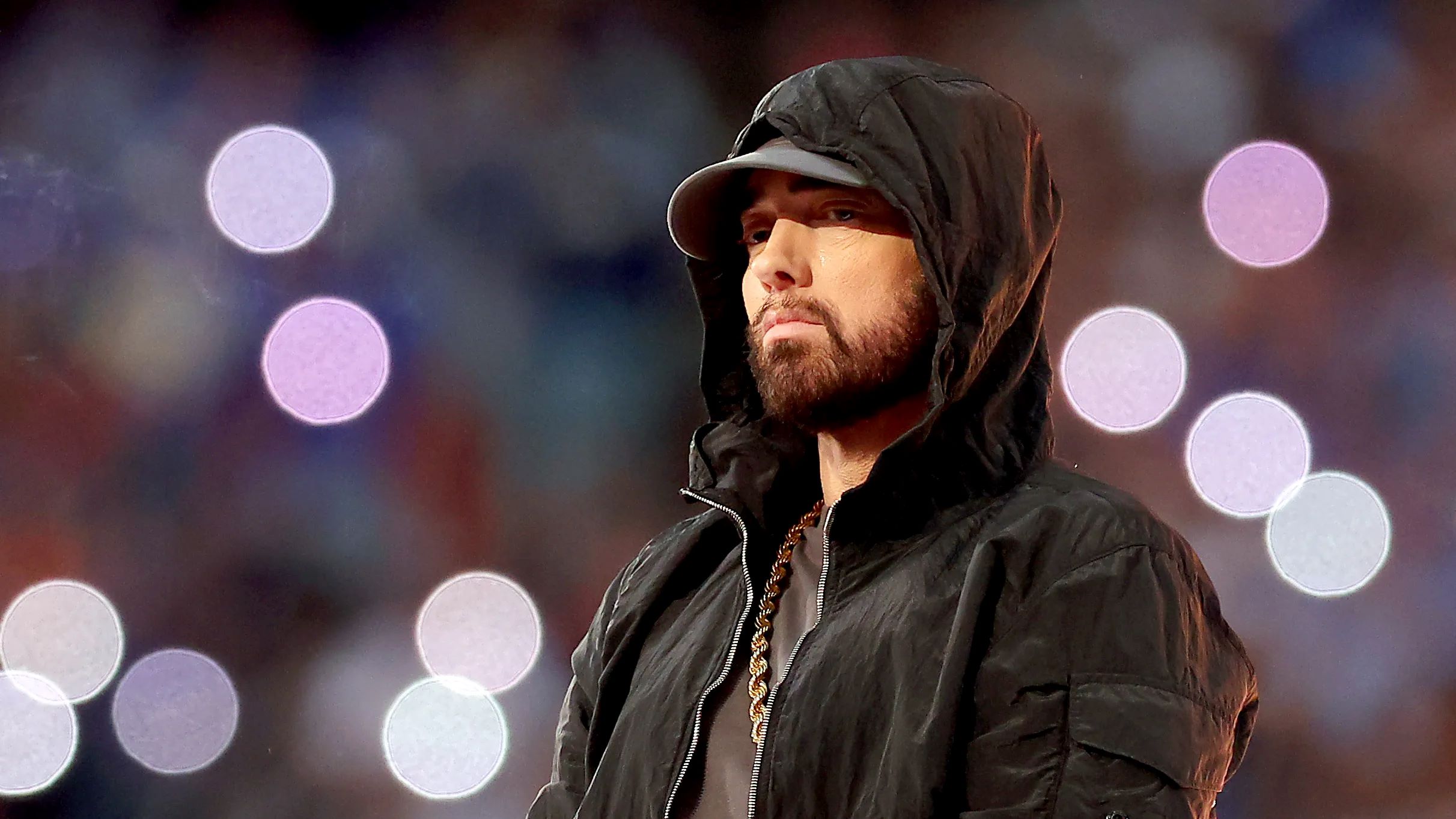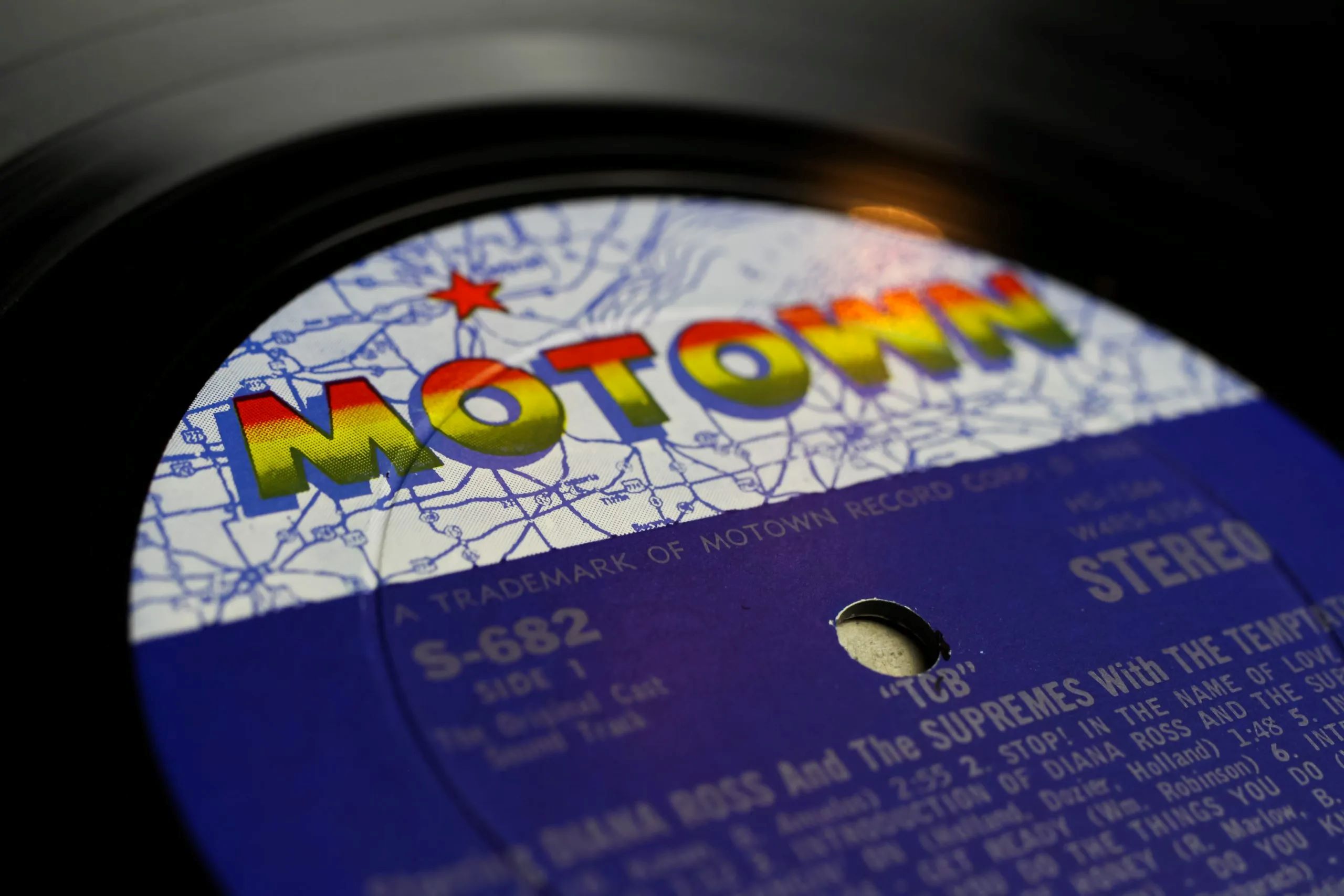Home>Production & Technology>Record Label>How To Use Spotify As A Record Label


Record Label
How To Use Spotify As A Record Label
Published: January 24, 2024
Learn how to use Spotify as a record label to promote your music, gain exposure, and connect with your audience. Maximize your reach in the digital age.
(Many of the links in this article redirect to a specific reviewed product. Your purchase of these products through affiliate links helps to generate commission for AudioLover.com, at no extra cost. Learn more)
Table of Contents
Introduction
With the rise of digital music platforms, record labels have had to adapt and find new ways to promote and distribute their artists’ music. One such platform that has revolutionized the music industry is Spotify. Originally launched in 2008, Spotify has quickly become one of the most popular streaming platforms, boasting over 345 million active users worldwide. As a record label, utilizing Spotify can greatly benefit your artists by increasing their exposure, reaching a wider audience, and generating revenue.
In this article, we will explore how record labels can effectively use Spotify as a powerful tool for promoting and managing their artists’ music. We will delve into various aspects, including setting up a Spotify account, creating and managing playlists, promoting and marketing your artists, collaborating with artists and producers, uploading and distributing music, analyzing data and metrics, engaging with fans, and maximizing revenue opportunities.
By implementing the strategies and tips discussed in this article, record labels can harness the full potential of Spotify and leverage its massive user base to propel their artists’ careers to new heights. So, let’s dive in and discover how to navigate the Spotify landscape and make the most of this remarkable platform.
Setting up a Spotify Account
To begin utilizing Spotify as a record label, the first step is to set up a Spotify account. Here’s a step-by-step guide:
- Create a Spotify for Artists account: Spotify for Artists is a platform specifically designed for music creators and record labels. It allows you to manage your artists’ profiles, access important analytics, and engage with fans directly. Visit the Spotify for Artists website and sign up for an account. Make sure to have all the necessary information and documentation ready, such as proof of ownership of the recordings.
- Verify your account: After creating your Spotify for Artists account, you will need to verify your account. Spotify will ask you to provide additional information and documentation to confirm your identity and ownership rights. This verification process is crucial in maintaining the integrity of the platform.
- Claim artist profiles: Once your account is verified, you can start claiming artist profiles on Spotify. Search for your artists using their names or unique identifiers, and if their profiles are available, you can claim them as the official representation of your label. This allows you to have control over the content and updates on their profiles.
- Customize artist profiles: After claiming the artist profiles, take the time to customize them to reflect your brand. Add high-quality profile pictures, banners, and artist description. Additionally, you can link social media accounts, websites, and tour dates to provide a comprehensive view of your artists’ activities.
- Create a label profile: In addition to artist profiles, you can create a label profile on Spotify. This allows you to showcase all the artists under your label and build a dedicated following for your brand. The label profile can serve as a hub for fans to discover new music and stay updated on your label’s releases.
Setting up a Spotify account is a crucial initial step to establish your presence on the platform as a record label. It provides you with the tools and access needed to effectively promote and manage your artists’ music. Now that we have set up the account, let’s explore how to create and manage playlists on Spotify.
Creating and Managing Playlists
Playlists are a powerful tool on Spotify that can help you promote your artists and their music. Here’s how you can effectively create and manage playlists:
- Create curated playlists: Curated playlists allow you to showcase your label’s talent by featuring your artists’ songs alongside other popular tracks. Create playlists that cater to various genres or moods to attract a wide range of listeners. Be sure to include your own artists’ songs in these playlists to increase their exposure.
- Collaborate with influencers and other artists: Collaborating with influential Spotify curators or other artists can help boost the visibility of your playlists. Reach out to popular influencers or artists in your genre and propose collaboration on a playlist. This allows you to tap into their existing fan base and create a mutually beneficial relationship.
- Promote playlists across platforms: Once you’ve created your playlists, promote them across different platforms, including social media, your label’s website, and newsletters. Encourage your artists and fans to follow and share these playlists to increase their reach and engagement.
- Update playlists regularly: Keep your playlists fresh and relevant by regularly updating them with new releases, trending tracks, and fan favorites. This shows your dedication to providing a dynamic listening experience and keeps your audience engaged.
- Engage with listeners: Engage with the listeners of your playlists by responding to comments, asking for feedback, and actively participating in the Spotify community. This creates a sense of connection and fosters loyalty among your audience.
- Submit to official Spotify playlists: Spotify has a range of official playlists curated by their algorithms and editorial teams. Submit your artists’ songs to these playlists for a chance to reach a wider audience. While it’s a competitive process, getting featured on official playlists can significantly boost your artists’ visibility on the platform.
By creating and managing playlists effectively, you can increase the discoverability of your artists’ music, attract new listeners, and build a dedicated fan base. Now let’s delve into how to promote and market your artists using Spotify.
Promoting and Marketing your Artists
Utilizing Spotify as a record label provides ample opportunities for promoting and marketing your artists to a global audience. Here are some strategies to effectively promote and market your artists on the platform:
- Utilize social media: Social media platforms such as Instagram, Twitter, and Facebook are powerful tools for promoting your artists. Share links to their Spotify profiles, playlists, and new releases. Engage with fans, run contests, and share behind-the-scenes content to build a loyal following.
- Collaborate with influencers: Influencer marketing has become a prevalent method of reaching new audiences. Identify influencers in the music industry or related genres and collaborate with them to promote your artists. Arrange for them to feature your artists’ songs in their content or playlists to gain exposure to their followers.
- Pitch to music blogs and online publications: Many music blogs and online publications curate playlists, review new releases, and feature emerging artists. Pitch your artists’ music to these outlets and secure placements to reach a wider audience and gain credibility in the industry.
- Run targeted ads: Spotify offers advertising options, allowing you to run targeted ads that reach specific demographics, locations, and music interests. Utilize these features to promote your artists’ music to the right audience, increasing the chances of connecting with potential fans.
- Engage with Spotify for Artists features: Spotify for Artists offers various features to engage with fans, including the ability to share exclusive content, organize virtual events, and create artist canvases. Utilize these features to create a sense of community and connection with your artists’ audience.
- Collaborate with other artists: Collaborations between artists can expand both their fan bases. Identify artists who share a similar style or audience and arrange for your artists to collaborate on a song or feature each other on their releases. This cross-promotion can expose both artists to new listeners.
By implementing these strategies, you can effectively promote and market your artists on Spotify, increasing their visibility and building a dedicated fan base. The next section will guide you through the process of collaborating with artists and producers to further enhance your label’s offerings.
Collaborating with Artists and Producers
Collaboration is a powerful tool that can expand the reach and creativity of your artists’ music. Spotify provides an ideal platform for record labels to facilitate collaborations with other artists and producers. Here are some steps to effectively collaborate and maximize the potential of these partnerships:
- Identify potential collaborators: Research and identify artists and producers who align with your label’s genre and aesthetic. Look for artists with a similar fan base and musical style to ensure a complementary collaboration.
- Reach out and establish connections: Once you have identified potential collaborators, reach out to them through their management, label, or social media channels. Engage in conversations and establish connections to explore possibilities for collaboration.
- Collaborate on music releases: Collaborative releases can be an exciting way to create buzz and expose your artists to new audiences. Consider producing a joint EP or single with another artist or collaborate on remixes and features to cross-promote each other’s work.
- Create joint playlists: Partner with other artists and producers to create joint playlists that feature a mix of your artists’ music alongside theirs. This cross-promotion exposes both parties to each other’s fan bases and helps in fostering a sense of community.
- Encourage artist remixes: Encourage your artists to remix each other’s songs or collaborate on remixes with other artists. Remixes offer a fresh take on familiar tracks and can attract new listeners who are fans of the remixing artist.
- Organize collaborative live performances: Collaborative live performances, whether it’s a joint concert or a featuring artist on a tour, can create unique experiences for fans and generate mutual exposure for the artists involved.
Collaborating with artists and producers not only expands your artists’ reach but also fosters creativity and experimentation. It allows for the exchange of ideas and influences, leading to innovative music productions. By following these steps, you can forge meaningful collaborations and further elevate your label’s offerings on Spotify.
Uploading and Distributing Music
Uploading and distributing music on Spotify is a crucial step for record labels to make their artists’ music accessible to a global audience. Here’s a guide on how to upload and distribute music effectively:
- Choose a digital distribution service: Select a reputable digital distribution service that offers a wide reach and reliable distribution to various streaming platforms, including Spotify. Some popular options include TuneCore, CD Baby, and DistroKid.
- Prepare your music: Before uploading, make sure your music is properly mixed, mastered, and ready for release. Ensure it meets Spotify’s formatting and quality standards. Create high-quality cover artwork that visually represents your artists’ music.
- Select a release date and strategy: Choose a release date that allows you enough time to promote the music effectively. Develop a strategy for your release, including pre-saving campaigns, press releases, and social media promotion.
- Upload to the distribution platform: Create an account with your chosen distribution service and follow their instructions to upload your artists’ music. Provide all the necessary metadata, including track titles, artist names, ISRC codes, and release information.
- Monitor the release process: Keep a close eye on the distribution process to ensure that your artists’ music is delivered to Spotify on time. Track the progress of the release and address any issues or errors promptly.
- Verify the music on Spotify: Once the music is distributed, verify that it is available on Spotify by searching for it on the platform. Ensure that the metadata is accurate and that the music is properly linked to your artists’ profiles.
- Promote the release: Once the music is live on Spotify, promote the release through social media, email newsletters, press releases, and playlist placements. Encourage fans and followers to stream and share the music to maximize its reach and impact.
By following these steps, you can ensure a smooth and successful process of uploading and distributing your artists’ music on Spotify. It is essential to prioritize quality, timely delivery, and effective promotion to maximize the visibility and impact of the music on the platform.
Analyzing Data and Metrics
Spotify provides valuable data and metrics that can help record labels track the performance of their artists’ music and make informed decisions. Here’s a breakdown of how to effectively analyze data and metrics on Spotify:
- Access Spotify for Artists analytics: Spotify for Artists provides a comprehensive dashboard with detailed analytics for your artists’ music. This includes streams, listeners, demographics, playlist placements, follower growth, and more. Access this information regularly to gain insights into your audience and track the success of your campaigns.
- Analyze streaming data: Dive into the streaming data to understand which songs are performing well, which playlists are driving the most streams, and where your audience is located. Identify trends and patterns to inform your promotional strategies and make data-driven decisions.
- Track listener demographics: Spotify provides demographic information on your artists’ listeners, including age, gender, location, and listening habits. Understanding your audience’s demographics helps you tailor your marketing strategies and target specific segments effectively.
- Monitor playlist placements: Pay attention to the playlists that feature your artists’ songs. Analyze the impact of these placements on stream counts and listener engagement. This information can help you identify playlist curators to build relationships with and seek future placements.
- Monitor follower growth: Keep an eye on the growth of your artists’ follower count. A steady increase in followers indicates growing popularity and engagement. Identify the factors that contribute to follower growth and replicate successful strategies in future campaigns.
- Compare performance over time: Track the performance of your artists’ music over time to identify trends and assess the effectiveness of different promotional efforts. Compare the success of previous releases to gauge growth and make improvements in your marketing strategies.
By consistently analyzing data and metrics on Spotify, record labels can gain valuable insights into audience preferences, measure the success of their promotional efforts, and make data-driven decisions to enhance the performance of their artists’ music. Now let’s explore how to engage with fans and build a community on Spotify.
Engaging with Fans and Building a Community
Engaging with fans and building a community on Spotify is key to cultivating a loyal and dedicated audience for your artists. Here are some strategies to effectively engage with fans and foster a sense of community:
- Respond to comments and messages: Take the time to respond to comments and messages from fans on your artists’ profiles. Show appreciation for their support, answer questions, and acknowledge their contributions. This personal interaction creates a sense of connection and fosters loyalty.
- Host live sessions and Q&A sessions: Organize live sessions, whether through Spotify’s live feature or on social media platforms, where your artists can interact directly with fans. Consider hosting Q&A sessions where fans can ask questions and receive personalized responses.
- Create collaborative playlists with fans: Involve fans in the creative process by creating collaborative playlists where they can contribute their favorite songs. This engagement encourages a sense of ownership and inclusivity within the community.
- Run competitions and contests: Engage fans by running competitions and contests with exclusive merchandise, meet and greets, or concert tickets as prizes. Encourage them to participate by sharing playlists, artwork, or cover versions of your artists’ songs.
- Share exclusive content: Reward your most dedicated fans with exclusive content such as unreleased tracks, behind-the-scenes footage, or exclusive interviews. This makes them feel valued and provides an incentive for continued support.
- Collaborate with fan-generated content: Highlight and share fan-generated content relating to your artists, such as covers, artwork, or dance videos. This not only showcases the talent and creativity of your fans but also strengthens the sense of community and appreciation.
- Encourage fan-generated playlists: Encourage fans to create and share their own playlists featuring your artists’ music. Recognize and promote outstanding fan-curated playlists, showcasing them on your artists’ profiles or social media platforms.
By actively engaging with fans and building a sense of community on Spotify, you can create a dedicated group of supporters who will champion and promote your artists. Fostering this connection fosters long-term loyalty and enhances the success of your artists’ music. Now, let’s explore how to maximize revenue opportunities on Spotify.
Maximizing Revenue Opportunities
Spotify offers various revenue opportunities for record labels to generate income from their artists’ music. Here are strategies to maximize revenue on the platform:
- Encourage streaming and playlist placements: Streaming makes up a significant portion of revenue on Spotify. Encourage fans to stream your artists’ music and actively seek playlist placements to boost their stream counts and royalty earnings.
- Register with a performance rights organization: Ensure your artists are registered with a performance rights organization (PRO) such as ASCAP, BMI, or SOCAN. These organizations collect and distribute royalties for public performances of their music on platforms like Spotify.
- Utilize Spotify Ad Studio: Spotify Ad Studio allows you to create targeted audio and display ads that reach specific audiences. Leverage this tool to promote your artists’ music or monetize by running ads for brands on your artists’ profiles.
- Explore brand partnerships: Seek out brand partnership opportunities that align with your artists’ values and image. Collaborate with brands for sponsored playlists, exclusive content, or product endorsements to generate additional revenue streams.
- Investigate sync licensing opportunities: Sync licensing involves placing your artists’ music in TV shows, movies, commercials, and other media. Explore opportunities to license your artists’ music and earn synchronization royalties.
- Utilize merchandising and direct-to-fan sales: Direct-to-fan sales and merchandise play a significant role in generating revenue. Utilize Spotify’s integration with merchandising platforms to promote and sell merchandise directly to fans through your artists’ profiles.
- Participate in Spotify for Artists’ fan funding feature: Spotify for Artists’ fan funding feature allows fans to directly support their favorite artists by contributing financially. Encourage fans to contribute, and promote this feature to create an additional revenue stream.
By employing these strategies, record labels can maximize revenue opportunities on Spotify and create sustainable income streams for their artists. It’s important to explore different avenues and adapt to the changing dynamics of the music industry to capitalize on these opportunities.
Conclusion
In conclusion, Spotify provides record labels with an array of powerful tools and opportunities to promote, manage, and monetize their artists’ music. By utilizing Spotify effectively, record labels can reach a global audience, increase exposure, and generate revenue. From setting up a Spotify account and creating curated playlists to promoting and marketing artists, collaborating with other artists and producers, uploading and distributing music, analyzing data and metrics, engaging with fans, and maximizing revenue opportunities, record labels can harness the full potential of Spotify.
Through strategic playlist placements, social media promotion, collaborations, and engagement with fans, record labels can build a loyal community around their artists, leading to long-term success. It is essential to analyze data and metrics regularly to make informed decisions and optimize promotional strategies. By maximizing revenue streams, such as streaming royalties, licensing opportunities, brand partnerships, and merchandise sales, record labels can create sustainable income for their artists and support their careers.
Remember, the key to success on Spotify lies in creating compelling and high-quality music that resonates with listeners, effectively promoting artists through various channels, engaging with fans, and adapting to the ever-changing music industry landscape. By staying innovative, staying connected with fans, and leveraging the power of Spotify, record labels can navigate the digital music landscape and elevate their artists’ careers to new heights.











